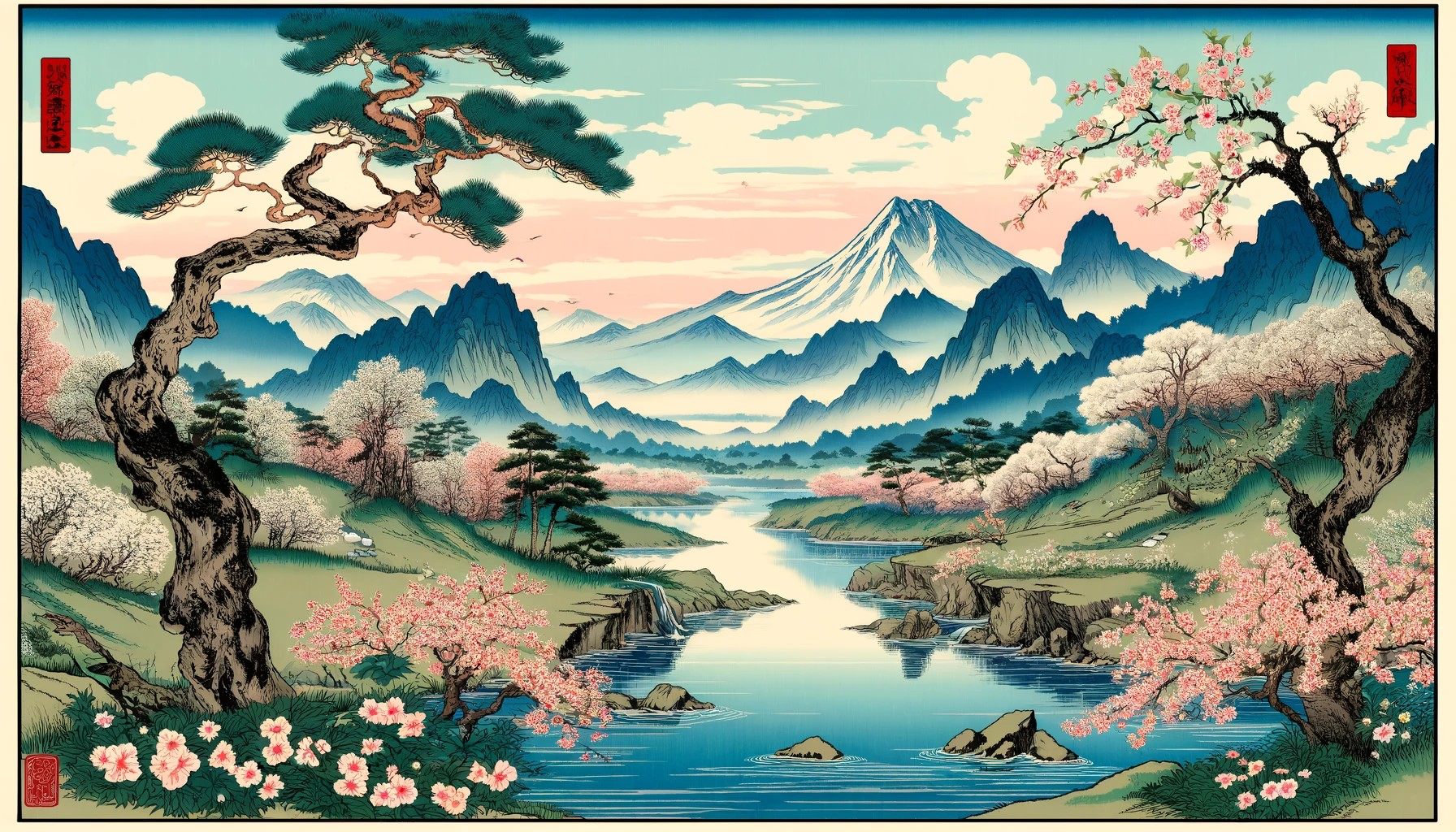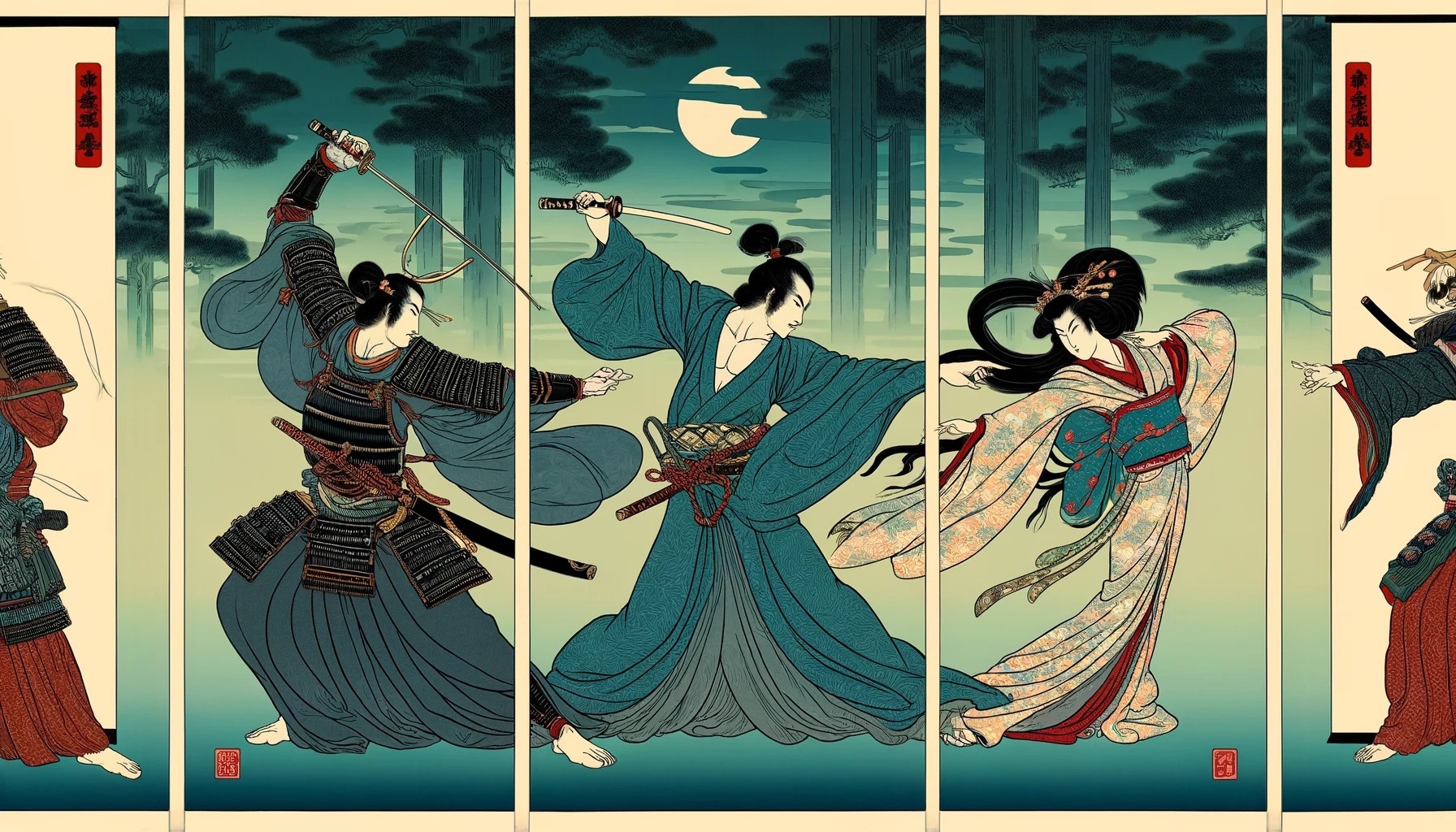
Author: Utagawa Hiroshige III (三代目広重) here as Negizu Hiroshige (葱図広重) with Utagawa Kuniaki (歌川国明).
Subject: Mount Camelia at Sekiguchi (Sekiguchi no Tsubaki Yama, 關口の椿山).
Series: Famous views of modern Tōkyō (kaimei Tōkyō meishō, 開明東京名勝).
Genre: meisho-e (名所絵).
Size: large (ōban, 大判) 35,7cm x 23,5cm (14,05 x 9,25 inches).
Publisher: Yorozuya Magobeī (万屋孫兵衛).
Carver: Muneoka/Munaoka (宗岡).
Period: c. 1881.
Trimmed: yes
Backed: yes
Code: UGHIII03002
Condition: good color, clear and vivid with strong saturation. No noticeable stains, halos, or wrinkles.
No repairs. It has been backed and trimmed.
Two women and other peasants are taking a walk at Tsubaki Yama, a renowned place where wedding ceremonies have been
held since the Edo period. The place is located in Sekiguchi, Kanda (神田), known for being Edo's oldest aqueduct.
There are two different versions regarding the origins of the name Sekiguchi, which can be roughly translated as 'gateway.'
The first version suggests that it comes from the beginning of the Ōshū path (Ōshū Kaidō, 奥州街道), one of the five routes
of the Edo period, of which the most famous is probably the Tōkaidō (東海道). The second version suggests that it comes from a
weir where the water, splitting its course, flowed both into the Edo River (Edogawa, 江戸川) and the Kanda aqueduct.
The cartouche on the top reports a text by the fiction writer Oka Jyōki (岡丈記):
"名利の塵界を厭ひ来りて關口の清流に耳を洗ひ椿山に八千歳を壽する墨仙詩聖も必らず茲に遊べるの勝地ならん
Myōri no jinkai o iya hi kirite sekiguchi no seiryū ni mimi o arai hi Tsubaki yama ni yachitose o
kotbuki suru Bokusen Shisei mo kanarazu koko ni asoberu no shōchi naran
Even Bokusen Shisei who lived for 8000 years and previously left this drab world of fame and fortune
came to wash his ears with the water from Mount Tsubaki's source; here certainly is suitable place
to have a good time"


